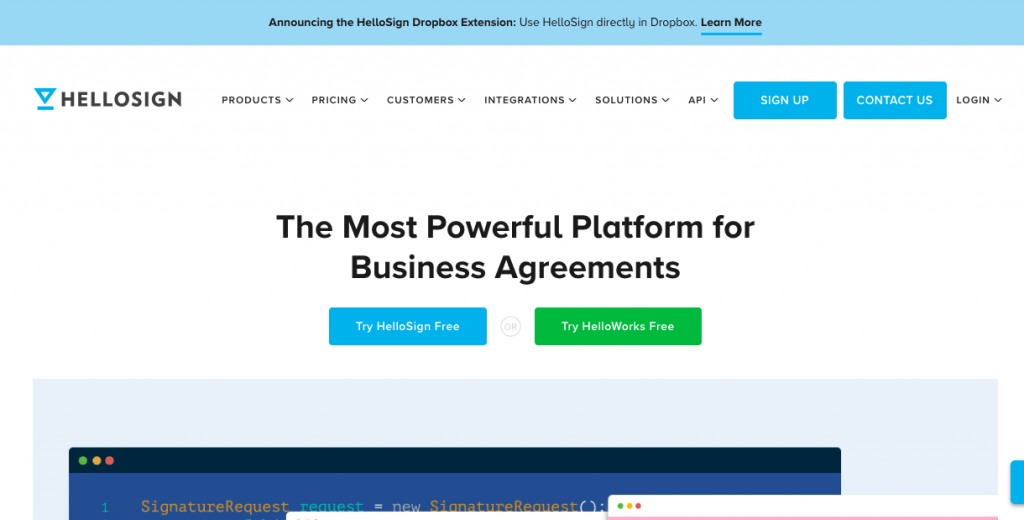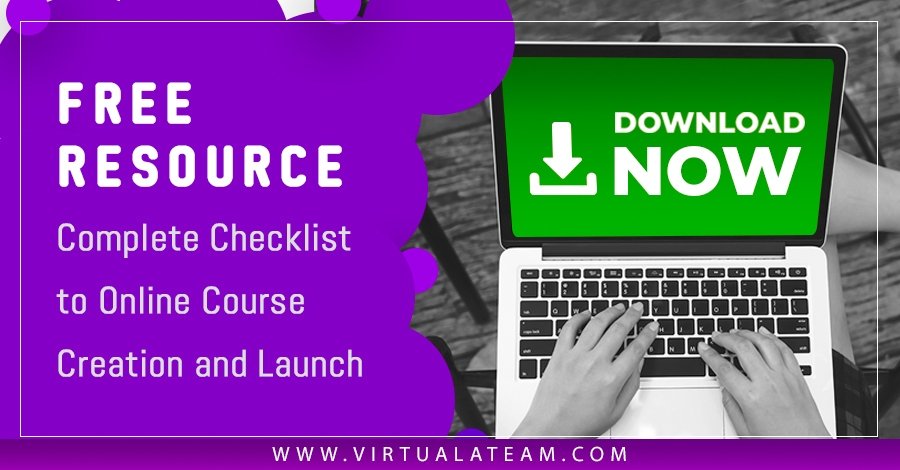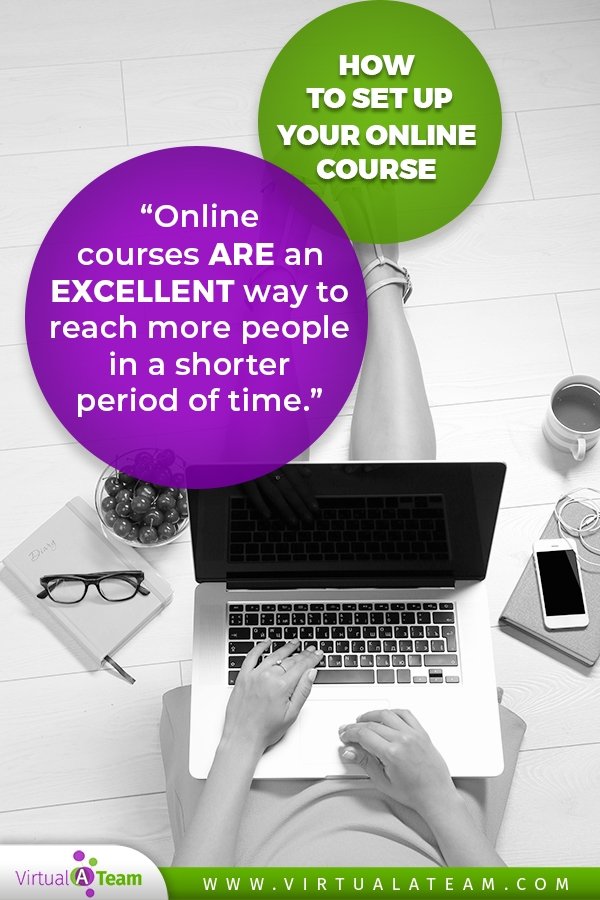There comes a time for many coaches and speakers when they want to leverage their time more effectively. For some, that means creating an online course to share their knowledge with more people at one time.
I recently had a client join Virtual A Team because she wanted a way to make more money with less effort. She had a large audience and needed help getting the most out of her time. However, the whole process was out of her zone of genius.
Once you begin to think about creating an online course, the actual steps get overwhelming VERY fast. There are, like, a MILLION different choices to make and many of those choices are in areas you probably have little to no knowledge in. After all, your business isn't building online courses.
What is an online course?
An online course is a class, skill, or system taught via online tools such as videos, video calls, emails or other digital presentations. The instructor and the students are not in the same location. And sometimes, the information is prerecorded and consumed on demand rather than a predetermined schedule.
Online courses can be free with a goal of generating leads for the business. Or they can range in price from less than $20 to several thousand dollars.
Do you need an online course?
It’s easy to hear about the huge launches and the great success of online courses and think that’s the quickest path to easy money.
You may be feeling burnt out working with one-on-one clients and want to share your wisdom with a greater number of people. And online courses seem to be a simple and practical way to reach those people.
Until you start digging into those success stories and the work behind them.
Behind the Scenes
Online courses ARE an excellent way to reach more people in a shorter period of time. But, what often goes unanswered in the success stories, is the work that led up to those successes.
There are a few questions you can ask yourself to help determine if creating an online course makes sense for you right now.
- Are you finding enough one-on-one clients to sustain your business? If the answer is no, then you will struggle to fill an online course.
- Do you have a system you use with your clients that is easily duplicatable? If you tend to wing it with each client, then you don’t have a system to your approach yet, without a system, then you are the product and that can’t be duplicated in an online course.
- Do you have enough money or skills to invest up front to get your course launched before the cash starts rolling in? You’ll either need to DIY your course set up or pay for it in advance of your launch. And, it may take more than one launch to recoup your costs. Are you prepared for that risk?
Deciding whether or not you are ready for an online course isn’t always easy. If you’d like to discuss the possibility of incorporating an online course into your business, schedule a call with Virtual A Team.
The Guide to Creating Your Online Course
Once you’ve decided to create your online course, there is a LOT of work that goes into it. I often have clients tell me that they never would have thought of all the steps it takes.
Depending on your budget and time frame, you may not do ALL of these for the first launch. You can use the information to go back and update your program later.
Before we get started, download the Complete Checklist to Online Course Creation and Launch now to have it handy.
Planning stage
The first step in creating your online course is planning.

Before you even begin to create your course, it pays to know that it is something your audience will want.
There’s nothing more frustrating than spending time and money to create and launch a program only to have no one show up.
Design and Develop Content
Determine Your Goals
What will be the primary goal for this course? Is it to generate leads? Will it funnel your audience into a higher price point product such as an inner circle or one-on-one coaching? Or maybe this is your top tier “signature” program?
Pro Tip
If you have never created an online course before, we recommend starting with a free or low cost intro program to get started.
Study Your Market
Find out what your market wants. Use Facebook groups, Amazon book reviews, polls and surveys to learn what your ideal target audience is looking for.
Study the Competition
What is your competition doing? What seems to be working for them? Can you expand on that or offer a different take?
Take your time doing the research, it will make or break your success.

Identify One Problem with One Solution
Once you’ve completed your research, identify the one problem you want to solve and the solution you will offer. This may have a very different answer depending on what your goals are for the program.
A coach who offers tips on how to be more effective in their video marketing may start out with a free online course walking people through how to purchase, set up and use the right equipment. The problem is where to start and her solution is to provide the step-by-step for getting started.
The next problem her clients face may be what content to create. She offers a low price point online course teaching them about the 5 types of videos used for business marketing.
Ultimately, her new clients land in either a signature course designed to help them overcome their fears of being on video or a one-on-one coaching program designed to help them get the most out of their video marketing efforts.
Outline Program Content
Now that you have your problem and solution, it’s time to outline the content of your course.
No matter what format you choose to present your content, you’ll need an outline to get started.
A few things to remember as you sit down to write your program:
- Each module should be a mini training with a beginning, middle, and end.
- Each module should have a win. What can the students implement after completing that module?
- Keep modules short enough not to overwhelm. If a module is longer than 45 minutes, students may never come back to finish the course. In fact, if you can break modules up into segments of 15 minutes or less, that is even better.
- Title modules with a hook. Make each module title something students will want to dive into. “Module 2 - Equipment” isn’t nearly as enticing as “Module 2 - What to buy based on your budget.”
- Set Action Steps to help your students implement what they’ve learned.
Once you’ve completed your outline, you can begin crafting the course based on how it will be presented (video, audio, text-based, slides, etc…)
Pro Tip
Outsource things like graphics, workbook creation or video editing and focus your time on creating the best content available.
Choose Value-added Items (bonus items)
As you write your course, keep in mind optional bonus items. Some suggestions for bonuses include:
- Content that was originally part of the course but was removed for various reasons.
- Prerequisite topics that will help the student get the most out of the course.
- Templates that help students take action faster.
Define the Structure
Online courses come in many formats. It’s time to decide how your’s will be structured.
Will it be presented live with everyone in attendance on each call? Or will it be available ongoing so anyone can join at any time (Evergreen)?
If it is Evergreen, will modules be available all at once so students can go through at whatever pace they choose? Or will the content be dripped to them over time?

Select the Tech
This is where a lot of solopreneurs get stuck. It's easy to look at your options for tech and feel totally overwhelmed. Let’s break it down into parts to make it a little easier to understand.
Evergreen Platforms
If your course will be evergreen, you’ll need to choose a platform to present your content. The platform is the place your content will be housed for access by your students.
Some platforms are designed to help you sell your course. These often take a percentage of your sale. Other sites allow you to keep your full sale price but charge a monthly hosting fee. There are also a few that can be purchased one time and hosted on your own website.
For a review of several online course platforms, check out www.learningrevolution.net
Live Platform
If your course will be presented live, you will want to choose a webinar or teleseminar platform such as Zoom, AnyMeeting, or even Facebook Live within a private group.
Autoresponder
Your autoresponder will send emails to market your program. It can also send onboarding and reminder emails once someone has signed up. We recommend using a program that can handle automations. Our favorite is ActiveCampaign but you may also consider something like ClickFunnels.
Affiliate Program Software
Affiliate programs are a great way to get others to promote your online course. For each program they sell, they get a certain percentage or flat rate. To track these sales, you will need an affiliate program such as Post Affiliate Pro.
Landing Page Software
You will need a sales page for your program. Sales pages are also often called landing pages. There are many options for landing pages. In fact, it’s even feasible to simply create a page on your existing website. However, if you want something that is designed to help convert to sign-ups, then consider one of the following options.
- OptimizePress for Wordpress - This premium plugin for Wordpress has a one-time purchase price instead of an ongoing subscription cost.
- ClickFunnels - Because ClickFunnels offers both the email and the landing page options, it's more of a one-stop-shop. You can also take advantage of the affiliate program software at the higher tier option.
- Your Email Marketing system - Most email marketing programs such as Mailchimp often have the ability to create basic landing pages.
Payment Processing Software
It’s time to collect some money! Payment processing can be as simple as a link to your Paypal account or a more complex online shopping cart. Consider what you have now and what may come with the systems you already have in place.
Need help deciding on the right set of tech tools for your online course? Virtual A Team is here to help. Schedule a complementary strategy session today and we will help you review your options.
Presale Stage
Once you’ve settled on the design for your online course, you’ll need to move into the sales and marketing phase. Each time you start to market your course, it’s called a launch. You may “launch” your course many times or you may launch once and continue to promote it regularly.
Launch Goals
Your launch goals will depend on the purpose of the course.
If this is a free course, your goal may be to get X number of new subscribers. If it’s a premium course, your goal may be to hit a certain number of sales.
Determine the Price
There’s a lot that goes into finding the right price for your course. Some questions to ask include:
- Is the course size limited? If you will be doing a live training and want to limit the number of students, that may increase the price you charge.
- Will you be offering scholarships or early bird registrations? If you offer discounts of any sort, consider raising the final price to compensate.
- Is this a limited time only program? If your course won’t always be available, that also puts a premium on the price.
Other things to consider when pricing your program will be what bonuses you offer, whether or not you will be offering payment plans, and are there any guarantees.
Set Your Dates
It’s important to know your dates when planning out the calendar.
When will your launch sale take place? When will the program actually begin?
Use those to determine the due dates for the following actions.
Gather Testimonials
Testimonials can be very beneficial in helping to sell your course. If you’ve already run this program or a similar program, consider reaching out to past participants to get their feedback. A great testimonial looks like this:
Before taking this program I (state the struggle or challenge that caused you to seek help)... And now that I have completed the program I (state how the program helped you to overcome the challenge and what life is like now).
If this is the very first time you’ve done this program, consider a free beta program with a handful of close contacts. Allow them to take the program for free in exchange for feedback and a testimonial. Their feedback can help you to determine if any tweaks to the content need to be made and the testimonial can be used in your next launch.
Pro Tip
Create a survey form that gathers feedback and send it out to all participates at the end of each course.
Create Themed Graphics
Just like your business has a brand, your course will too. You’ll need special graphics to complement that brand.
- Social media promo graphics (for Facebook, Instagram, etc…)
- Landing page graphics for your sales page.
- Graphics for the emails (a header image, etc…)
Be sure to delegate this task so you can focus on what you do best.
Set Up Onboarding Forms or Agreements
Some programs will require specific agreements or forms to be signed prior to participation. If you have questions you want your students to answer, you can use online form tools such as Jotform or a plugin for Wordpress such as Ninja Forms.
For things like non-disclosure agreements, consider using a tool like HelloSign.

Create Sales & Thank You Pages
How you design your sales page will depend on personal preference and some trial and error. Some people still feel that long-form pages (a sales page that relies heavily on written content) convert better than short form or video based pages.
However, the skill of the copywriter has a lot to do with this. If you aren’t hiring a professional copywriter for your page (and you aren’t one yourself), we recommend sticking to the short form pages.
Consider recording a 90 second to 3 minute video talking about why someone needs your course, what they will learn and what they can expect as a result. Use this video on the sales page and in social media marketing.
Thank you pages are great opportunities to share bonus material or upsell to VIP status. Don’t forget the thank you page.
Write Sales Autoresponder Series
These are the emails you will send to your existing email list promoting your new course. The number of emails will depend on the length of time your launch is underway. At a minimum consider writing the following:
- First email - the introduction to what you are offering.
- Second email - FAQ email answering the most common questions.
- Third email - outlining bonuses and/or early bird deadlines.
- Fourth email - First last chance to go out the day before or morning of the start of your program.
- Fifth email - Last last chance to go out just before the program begins.
Here’s another area where hiring a qualified copywriter can improve your sales results.
Write Onboarding Autoresponder Series
Once someone has signed up for your online course, what do they need to do next? This is where you can attach links to your surveys or non-disclosure agreements. It might also include any prerequisite homework or tips for getting the most out of the course.
Pro Tip
Remember that some people will be joining your program at the last possible moment. If you schedule your onboarding sequence to go out over a series of days, some people may not get all the content
Create Social Media Marekting Plan
At this point, you’ll want to start working on your plan for social media.
- Do you need images to share? Get those created.
- Will you do live videos to help promote? Write the scripts in advance.
- Are you going to use social media ads? Create the content and set up the strategy.
Use a social media calendar like the one at Hubspot to plan out your entire social media push. Use social media management tools like Smarterqueue to schedule your content in advance.
Create Blog Posts to Promote the Launch
If you have an active blog, one or two blog posts can help you to market your course. Topics that are beneficial include content that helps the audience prepare for the course (prerequisite type stuff) or case studies of how others have done in the course.
Pro Tip
You can use the content from your blog articles in your email campaigns and vice versa.
Create Affiliates/Partner Marketing Content
Who’s helping you to promote your course?
Whether you have a fully set up affiliate program or just have a few people who are happy to help you promote, you’ll get more out of their efforts if you create content specifically for their use.
You can repurpose much of the marketing content you’ve already created but be sure to rephrase it in words that fit who’s sharing it.
Package it together in a Google Drive or Dropbox folder that you can share with your partners.
Test Tech
I’ll say this one a few times. Run through a test with any tech you have set up so far. Have someone else receive all of the emails and test that the links are working and there are no glitches in your affiliate programs.
Sales
It’s time to SELL SELL SELL!
Hopefully, you took the time to get all of your sales materials together in advance. That will lessen the workload during your selling period.
Social Media
If you took my advice, most of your social media promotion is already scheduled. You simply need to go in and do your live videos and/or engage with the comments and questions received.
Blog Posts
Now that your blog posts are published, are there any social media groups you can share them in? How else can you use your blog posts to promote your sale?
Affiliates & Partners
If you have not already identified who will be an affiliate or partner to help you promote your program, now is the time. Identify 5 to 10 individuals whom you know would help share your program. Be sure they have a similar target audience to get the most out of their share efforts.
Send them an email and give them a call to invite them to participate. Be sure to give them access to the content you created to help them promote for you.

Call
No amount of social media or email marketing beats the phone call. As your launch date draws closer, pick a list of contacts to call and personally invite them to your offer. A great way to do this is to use the phrase, “Who do you know that would be interested in…” It takes the pressure off of them directly and still allows them to say, “ME! I’m interested.”
During your marketing and sales phase, consider these other 9 ways to market your event.
All Aboard!
Someone signed up! OMG, now what?!
Don’t go into shock. That’s what’s supposed to happen!
If your Onboarding autoresponder is set up properly, this is when that automation kicks in. Just keep an eye on it to make sure everything is going out as expected.
Ready, Set, GO!
You’ve worked on this for weeks (or months). You’ve successfully launched and gotten people to sign up. It’s now time to deliver a kick ASS program!
Just be sure to watch for and address any challenges as you go.
Review
The best programs get better with review. Take some time to send out follow up surveys asking for input and feedback. This is also a great time to ask for testimonials you can use in future promotions.
Pro Tip
When asking for testimonials, make sure it’s clear how that testimonial will be used. I’ve had a client who was not clear on this. She ended up having to hire a lawyer for the “damages” the customer felt had been done by the improper use of their feedback.
Take time now to review all feedback while the course is still fresh in your mind. Make details notes and plans for the next launch.
CELEBRATE!
It’s time to PARTAY! Did you meet your launch goals? Even if you didn’t, you’ve put in a LOT of work that will pay off down the line. Take some time to celebrate all of your hard work and effort.
Get the Checklist
There were a LOT of detailed steps in this article. Grab the checklist now and use it for all of your online courses.




